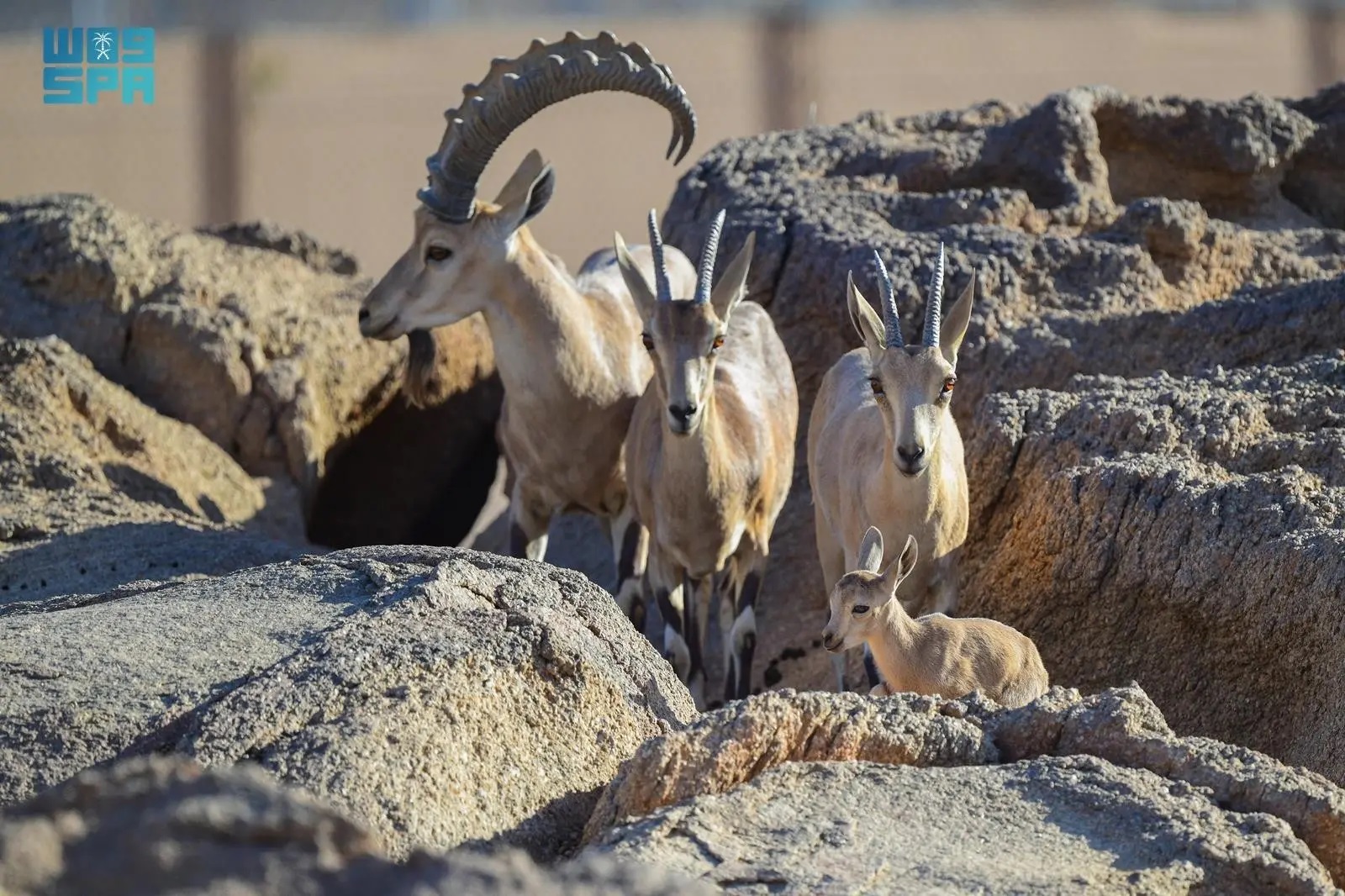
Nubian Ibex Newborns Mark Rewilding Milestone at Prince Mohammed bin Salman Royal Reserve
The Prince Mohammed bin Salman Royal Reserve has announced the birth of its first two Nubian ibex newborns, marking a milestone achievement in the reserve’s rewilding program aimed at restoring native species in the Kingdom.
This initiative aims to restore 23 historically occurring species, including the Nubian ibex, which is listed as Vulnerable by the International Union for Conservation of Nature (IUCN), with fewer than 5,000 mature individuals remaining in the wild globally.
Prince Mohammed bin Salman Royal Reserve CEO Andrew Zaloumis stated: “The birth of these ibex newborns is an exciting achievement in the reserve’s rewilding program. It marks the fourth iconic species to successfully breed as part of our initiative, following the births of the Arabian oryx, sand gazelle, and mountain gazelle. Each of these milestones brings us closer to the Prince Mohammed bin Salman Royal Reserve Development Authority’s vision to Rewild Arabia.”
Zaloumis noted that thanks to the Kingdom’s conservation efforts, ibex populations are increasing in royal reserves across Saudi Arabia.
The 24,500-square-kilometer Prince Mohammed bin Salman Royal Reserve is one of eight royal reserves in the Kingdom, stretching from the lava plains of the Harrats to the deep Red Sea in the west and connecting NEOM, Red Sea Global, and AlUla. It is also home to the Public Investment Fund’s Wadi Al Disah project and Red Sea Global’s Destination AMAALA.
The reserve encompasses 15 distinct ecosystems, covering just 1% of the Kingdom’s terrestrial area and 1.8% of its marine area. It is home to over 50% of the Kingdom’s species, making it one of the most biodiverse protected areas in the Middle East.








